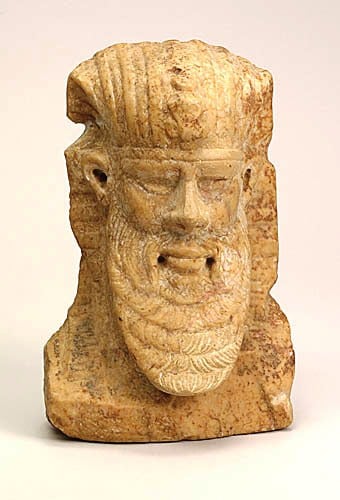
One of two rare artifacts stolen from the Montreal Museum in 2011 has been recovered and returned to the museum by Canadian police. The recovered item is a 5th century B.C. Achaemenid limestone bas-relief worth a reported $1.5 million. Part of the museum collection for decades, the piece was discovered more than 2,000 miles away from Montreal, in Edmonton.
Asked for comment about the return of the Persian artwork, Montreal Museum spokesman Thomas Bastien told artnet News via email: “For the moment, we cannot talk about the recovered Achaemenid bas-relief because we don’t own it any more. AXA insurance does. Our board of trustees will meet in March to decide what to do in this situation.”
Shortly after the theft, the museum filed a claim with its insurer, AXA Art, and received a payout presumably for “hundreds of thousands of dollars,” the value reported by AXA Art in a statement about the recovery. AXA CEO Christiane Fischer told artnet News, “AXA Art works closely with international authorities to recover the stolen items.” In July 2012 AXA Art issued a statement offering a “substantial reward, subject to specific conditions, for information leading to safe recovery” of the work, and additional rewards, up to CAN$10,000, for anyone able to identify one of two suspected individuals captured on film by the museum’s closed circuit television system. Ms. Fischer described the recovery of the relief as the result of “an intensive yearlong investigation between the police authorities in Montreal and Edmonton.”
Mr. Bastien told artnet, “The panel is now at the Museum but not in the gallery. It has been returned for safety reasons for the moment. Concerning the possible outcomes, I don’t know them for the moment. The board of trustees does but has not revealed anything yet.”
But AXA sounds confident that the piece is going to end up at the museum, noting in its recent statement: “AXA Art is thrilled that this object can be returned to the Montreal Museum of Fine Arts, where it will continue to be enjoyed by the public for generations to come.”
Art insurance policies typically contain a “buy-back” clause. In cases where a work is stolen and the insurance company pays out a total loss claim to the insured owner, the museum in this case, the work becomes the property of the insurance company if it is recovered. The buy-back clause gives the original owner the option of reacquiring the work, essentially by returning the insurance money. Presumably the Montreal Museum board will vote on whether to reacquire the work at its March meeting, a decision which seems likely given the rarity and cultural importance of the work.
Says Fischer, the terms typically provide for the work to be bought back at the amount originally paid out to the museum plus recovery costs, or market value, whichever is the lesser amount. However, there is no obligation for the museum to buy back the work.
Though AXA did not identify the name of the culprit, CTV News reported that a 33-year old Edmonton man named Simon Metke was charged with buying the item. Metke, who bought the relief for $1,400, said he had no idea it was stolen, or that it was worth more than a million dollars, according to CTV. Metke said the seller was a man who told him he needed to unload the work quickly and cheaply because he “had to pay his child support…and pay his rent.” Metke said the seller hinted that the work was worth far more.
This Roman Empire bust, also stolen in 2011, has not yet been recovered. Experts say it is worth approximately $40,000.
Also still missing is a Roman Empire–era bust said to be worth about $40,000. According to AXA, which also insured this item, the bust was stolen along with the bas-relief.